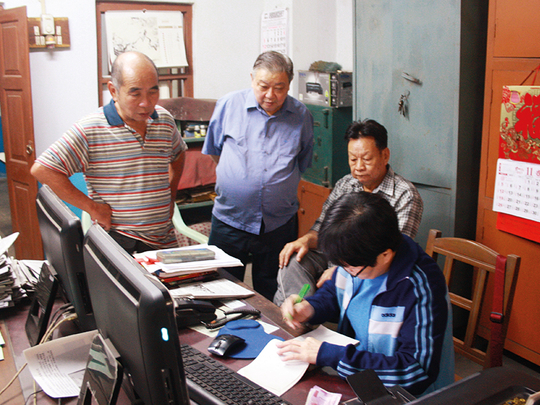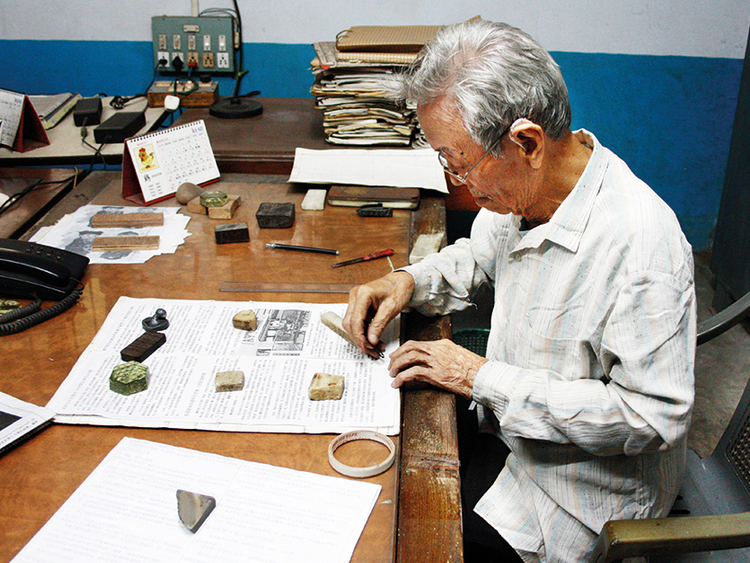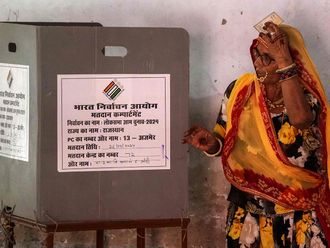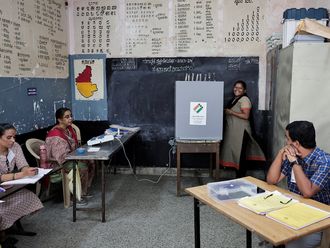
New Delhi: Chinese settlers inhabit the narrow alleyways of Kolkata’s Tangra area, and every morning they are seen poring over newspapers.
A close look reveals that the script used by the paper to disseminate news is Mandarin. The Overseas Chinese Commerce of India is the only Chinese language newspaper published in India.
Amid the cacophony of traffic, it is possible to miss the dilapidated structure at 6 New Tangra Road, which is the newspaper’s office. The signage in Mandarin atop the entrance signifies this, but it could surprise any journalist that a daily newspaper could be churned out in such a modest set-up. Next to a bright red grilled door a plaque reads, ‘Chinese Tannery Owners Association’.
The office opens daily from 8am-11am. The two-room office includes an empty hall, where the only furniture is a table stacked with bundles of newspapers. Rows of black and white framed pictures are of former presidents of the Chinese Tannery Owners Association, from where the newspaper has operated for decades.
The newsroom comprises two large tables, two computers, two landline telephones, a printer machine, three chairs, cupboards, files and bundles of newspapers kept neatly.
The editor, K.T. Chang, and his staff, a woman named Helen Yang, sit at either end of tables joined together.
Chang composes the newspaper in a primitive manner. The cut and paste job is done on translucent paper sheets using a ruler, blade, paper cutter and a cellophane tape. Small pieces of stones work as paperweights. Each page is made into a block and printed.
Helen works on the computer sourcing news from Chinese websites. The paper also receives direct feeds from Chinese papers and news agencies as well as the Chinese embassy. News items are also picked up from television and radio. It also carries national and international news picked up from the morning English papers, which is then translated into Chinese.
The first page carries international news, page two is a mix of China-specific and city news concerning the Chinese diasporas, page three has articles related to beauty and lifestyle, and page four carries news from Hong Kong, Macau and Taiwan. Except for a few English words, the entire paper is in Mandarin, with photographs breaking the monotony. That is the set format, except on Chinese New Year when it gets a special edition.
Chang says, “It serves as a newsletter for the community announcing births, deaths, engagements, marriages and other social events. The four-page black-and-white tabloid earns its revenue from advertisements for which people have to approach us personally. And the Tannery Owners’ Association runs it collectively.”
Launched in 1969 by entrepreneur Lee Youn Chi, who was also into the tannery business, it has had four editors before Chang. The newspaper was at one time handwritten in beautiful calligraphy. “The handwritten system was stopped in 1998, a year after I became the editor,” he says.
The circulation of the paper has dropped from 800 when it started to about 200, as few youngsters are taught to read the language. Unhappy about the turn of events, Chang says, “People prefer sending their children to English-medium schools, which is understandable. But they have not ensured children learn their native language as well.”
A lot has changed. There are just about 250-odd Chinese families in Tangra and most young people have moved out of the place. Not sure if people will continue reading his newspaper for years to come, the editor says, “With only a few interested in reading now-a-days, one cannot predict the newspaper’s fate. What I am sure of is, until the end of my life, I am determined to print it. But after I am gone, I know, no one will bother to continue with the legacy.”
For Chang, a retired tannery worker, it is not just a newspaper. “It is an effort to keep our tradition, culture and language alive,” the bespectacled editor says politely.
So how does he manage to distribute it? “An employee personally delivers the newspaper everyday to the members of the Chinese community who subscribe to it. What keeps me going is the enthusiasm with which people from the older generation wait for their daily dose of information from the newspaper. The tabloid is not available with local news vendors,” he says.
What is published today is read the next morning. Currently sold at Rs2.50 (Dh0.14) per copy, its cost at one time was few paisa. In this day and age of online reading, the newspaper has subscribers in other states as well. “A couple of copies are sent to Delhi, Mumbai and Kanpur,” Chang explains.
The newspaper is wrapped at 11am and Chang is ready to leave. But unlike editors who walk out of swanky offices and head for their glittering SUVs, the 70-plus unassuming editor, smiling, rides a bicycle back home.













